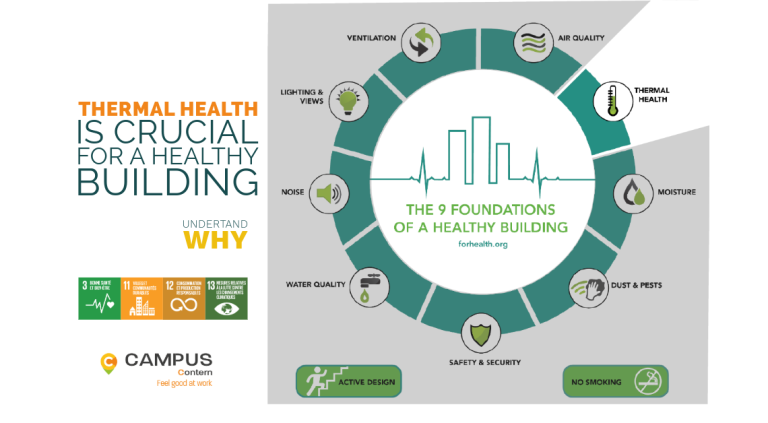Thermal health refers to the broader impact of indoor temperature and humidity on human health and well-being, extending beyond the traditional idea of thermal comfort.
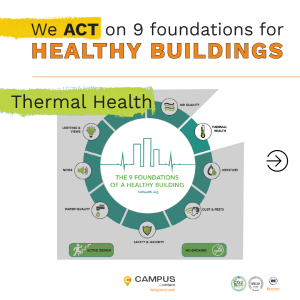
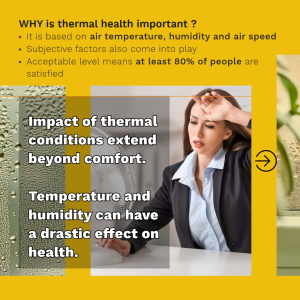
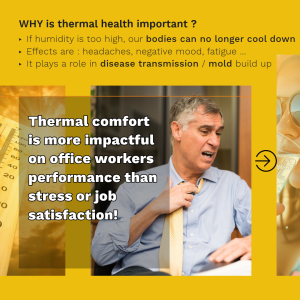
Understanding Thermal Health and Its Importance
Thermal comfort focuses on subjective satisfaction with temperature, as defined by models like Ole Fanger’s, which aim to ensure that 80% of occupants are comfortable based on factors such as air temperature, humidity, and clothing insulation.
However, thermal health looks at the larger picture, recognizing that poorly regulated temperatures can lead to severe health consequences, including heat-related illnesses and mortality.
The 2003 heatwave in France, where nearly 15,000 people died, underscores the critical importance of thermal health, especially as climate change increases the frequency of extreme temperature events. Inadequate indoor cooling can exacerbate outdoor heat, putting vulnerable populations at risk. Hence, considering thermal health is essential, not just for comfort but for public health.
Impact of Thermal Conditions on Health and Performance
Poor indoor temperature regulation has a profound impact on health. When indoor temperatures rise too high or fluctuate drastically, occupants experience symptoms such as headaches, eye irritation, and respiratory issues.
Warm and humid environments also encourage mold growth, which can worsen asthma and allergies, while cold and dry environments can facilitate the spread of viruses like influenza. Additionally, research shows that high indoor temperatures contribute to “sick building syndrome,” which affects cognitive function and increases absenteeism.
Temperature also impacts learning and performance. In fact, research on New York City high school students found that performance on standardized tests significantly dropped when taken on hot days, showing how important maintaining optimal indoor conditions is for learning and productivity.
Building Design and Mechanical Systems for Thermal Health
Mechanical systems in buildings, particularly air conditioning and ventilation systems, play a vital role in maintaining thermal health. However, in many buildings, these systems are insufficient or poorly designed. Air conditioning can effectively reduce indoor heat and humidity, but if the systems are inefficient or absent, indoor spaces can become hotter than outdoor environments, particularly during heatwaves.
This problem is further exacerbated in urban areas, where “heat islands” amplify outdoor temperatures, and in buildings with poor ventilation strategies.
One approach to improving thermal health is to decouple ventilation systems from heating and cooling functions, allowing for better control over temperature and air quality. Advanced building designs that optimize insulation, ventilation, and cooling can make indoor spaces more resilient to temperature changes and heat events. Proper insulation, for instance, helps maintain stable indoor temperatures by minimizing heat exchange with the outside environment.
@CAMPUS CONTERN it means :
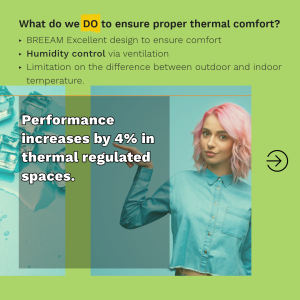
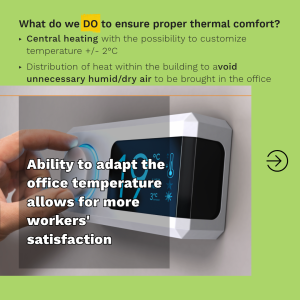
- We optimize insulation, ventilation and heat/cool air distribution within the building to maintain proper equilibrium humidity / temperature
- We use central heating yet every office can manage temperature within +/- 2°C for subjective comfort
- We ensure a maximal gap between external and internal temperature to respect the body function : too big of a gap can be dangerous when people step outside for their break.
- We pay special attention to mold and humidity, as we know that it can be harmful for the tenants as well and detrimental to the building structure.
Our Goal :
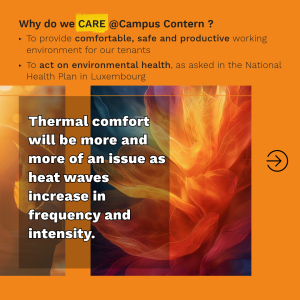
- To make sure that our tenants have a safe and healthy work environment. They spend a lot of time in our buildings, it is our responsibility to do our best to reduce the causes of fatigue, absenteeism and to foster concentration and performance
- To protect our tenants from chronicle diseases and play our part in the National Health Plan
Source : “The 9 foundations of a healthy building” Harvard School of Public Health – forhealth.org
